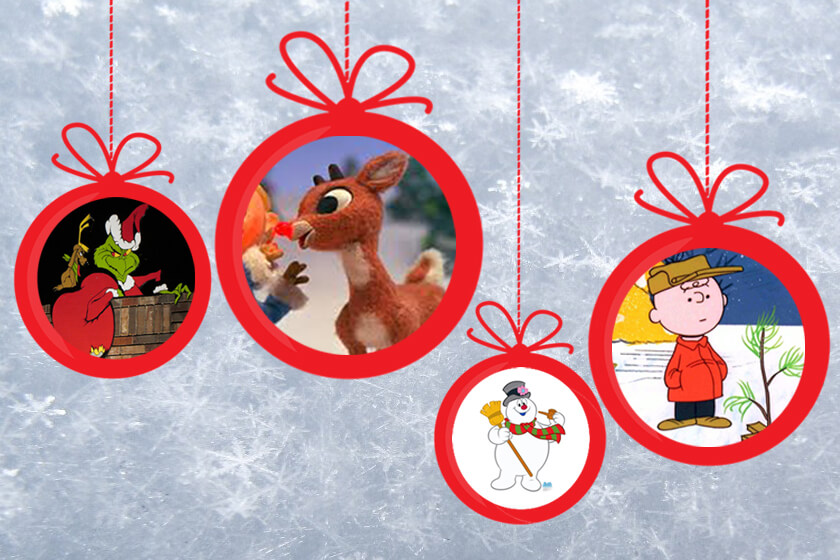West Long Branch, NJ – What’s America’s favorite animated Christmas special: Rudolph or Charlie Brown? The latest Monmouth University Poll takes on this weighty question. [Spoiler: it’s the red schnozzola.] And although slightly fewer Americans say they celebrate Christmas today than two years ago, fully two-thirds use “Merry Christmas” as their preferred greeting during the Yuletide season.
About 9-in-10 Americans (89%) celebrate Christmas, 5% celebrate Hanukkah and 3% celebrate Kwanzaa. The number who celebrate Christmas has dropped by a small but statistically significant 5 percentage points since 2015 when it stood at 94%. The number who say they celebrate none of these December holidays has increased from 4% to 8% over the past two years. A Gallup poll conducted in 1990 found that 96% of the country celebrated Christmas and 6% celebrated Hanukkah back then.
The poll also finds that 67% of the public tends to use “Merry Christmas” as their usual greeting during this time of year. Another 25% say “Happy Holidays.” Because everything is political in this day and age, there is a bit of a partisan divide on the preferred seasonal greeting. Republicans (87%) are more likely than independents (61%) and Democrats (58%) to use “Merry Christmas,” while Democrats (34%) and independents (29%) are much more likely than Republicans (9%) to use “Happy Holidays.”
“With apologies to Mark Twain, reports of the death of ‘Merry Christmas’ have been greatly exaggerated,” said Patrick Murray, director of the independent Monmouth University Polling Institute.
Never one to shy away from asking the tough questions, Monmouth waded into the thick of the Yuletide debate to determine which animated holiday television special is truly America’s favorite. In fact, nearly half the public can name a top pick.
And the winner is … Rudolph the Red-Nosed Reindeer, chosen by 32% of those with a favorite animated special. A Charlie Brown Christmas places second (24%), followed by How the Grinch Stole Christmas (14%), and Frosty the Snowman (12%). Other specials receiving honorable mention include The Nightmare Before Christmas (2%), The Polar Express (2%), Little Drummer Boy (1%), Santa Claus is Coming to Town (1%), The Year Without a Santa Claus (1%), and Mickey Mouse’s Christmas (1%).
Among Americans under 55 years old, those with children at home divide their loyalties between Charlie Brown (32%) and Rudolph (31%) while those without children in the household put Rudolph in first place (34%) followed by the Grinch (22%). Among those age 55 and over, Rudolph (31%) barely nudges out Charlie Brown (27%) as favorite animated special.
Monmouth also examined the choice of favorite animated holiday TV special by political leanings. And lo and behold, the poll finds no significant differences. All partisan groups put Rudolph in the top spot (Republicans-32%, Democrats-34%, independents-31%) and Charlie Brown in second place (Republicans-26%, Democrats-24%, independents-22%).
“Republicans, Democrats, and independents actually agreeing on something? It’s a Christmas miracle!” said Murray.
The Monmouth University Poll was conducted by telephone from December 10 to 12, 2017 with 806 adults in the United States. The results in this release have a margin of error of +/- 3.5 percent. The poll was conducted by the Monmouth University Polling Institute in West Long Branch, NJ.
QUESTIONS AND RESULTS
(* Some columns may not add to 100% due to rounding.)
[Q1-4, 7, 9-18 previously released.]
[Q5-6, 8, 19-32 held for future release.]
33. Do you celebrate Christmas, Hanukkah, Kwanzaa, or none of these holidays? [If YES: Which?] [Note: Results add to more than 100% because multiple responses were accepted]
| TREND: | Dec. 2017 | Dec. 2015 |
| Christmas | 89% | 94% |
| Hanukkah | 5% | 6% |
| Kwanzaa | 3% | 3% |
| None of these | 8% | 4% |
| (VOL) Don’t know | 1% | 1% |
| (n) | (806) | (1,006) |
34. Which holiday greeting do you usually use at this time of year: Merry Christmas, Happy Holidays, Happy Hanukkah, Happy Kwanza, or no holiday greeting at all?
| Dec. 2017 | |
| Merry Christmas | 67% |
| Happy Holidays | 25% |
| Happy Hanukkah | <1% |
| Happy Kwanzaa | <1% |
| No holiday greeting at all | 4% |
| (VOL) Other | 3% |
| (VOL) Don’t know | 1% |
| (n) | (806) |
35. Do you have a favorite animated television holiday special?
| Dec. 2017 | |
| Yes | 48% |
| No | 52% |
| (n) | (806) |
[The following question was asked of those who said “Yes” to Q35; n=380, moe=+/-5.0%.]
36. What is it? [LIST WAS NOT READ]
| Dec. 2017 | |
| Rudolph the Red Nosed Reindeer | 32% |
| Charlie Brown Christmas | 24% |
| How the Grinch Stole Christmas | 14% |
| Frosty the Snowman | 12% |
| The Nightmare Before Christmas | 2% |
| The Polar Express | 2% |
| Little Drummer Boy | 1% |
| Santa Claus is Coming to Town | 1% |
| The Year Without a Santa Claus | 1% |
| Mickey Mouse’s Christmas | 1% |
| Mr. Magoo Christmas Carol | <1% |
| Simpsons’ Christmas | <1% |
| Robbie the Reindeer | <1% |
| South Park Christmas Critters | <1% |
| Family Guy Christmas Episode | <1% |
| Emmet Otter’s Jug-Band Christmas | <1% |
| Other | 9% |
| (n) | (380) |
METHODOLOGY
The Monmouth University Poll was sponsored and conducted by the Monmouth University Polling Institute from December 10 to 12, 2017 with a national random sample of 806 adults age 18 and older, in English. This includes 403 contacted by a live interviewer on a landline telephone and 403 contacted by a live interviewer on a cell phone. Telephone numbers were selected through random digit dialing and landline respondents were selected with a modified Troldahl-Carter youngest adult household screen. Monmouth is responsible for all aspects of the survey design, data weighting and analysis. Final sample is weighted for region, age, education, gender and race based on US Census information. Data collection support provided by Braun Research (field) and SSI (RDD sample). For results based on this sample, one can say with 95% confidence that the error attributable to sampling has a maximum margin of plus or minus 3.5 percentage points (unadjusted for sample design). Sampling error can be larger for sub-groups (see table below). In addition to sampling error, one should bear in mind that question wording and practical difficulties in conducting surveys can introduce error or bias into the findings of opinion polls.
| DEMOGRAPHICS (weighted) |
|
Self-Reported |
| 28% Republican |
| 41% Independent |
| 31% Democrat |
| 49% Male |
| 51% Female |
| 31% 18-34 |
| 34% 35-54 |
| 35% 55+ |
| 65% White |
| 12% Black |
| 15% Hispanic |
|
8% Asian/Other |
Click on pdf file link below for full methodology and results by key demographic groups.




